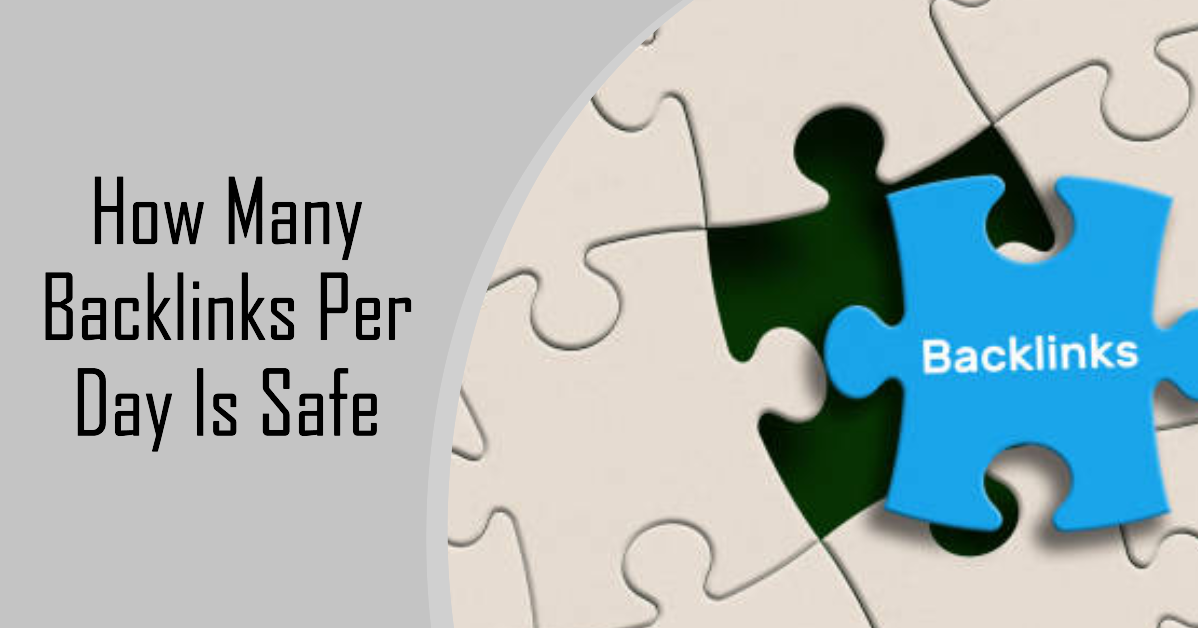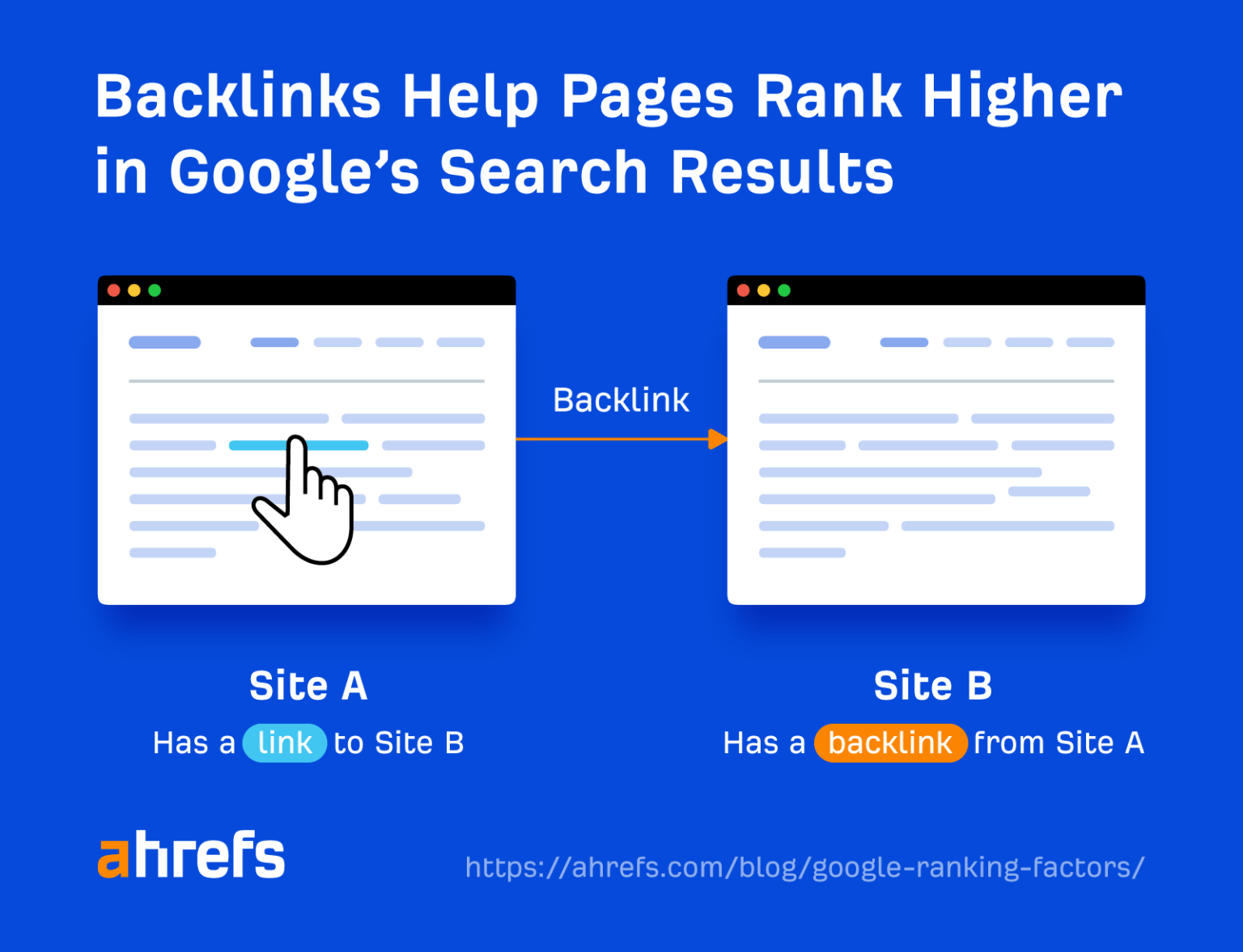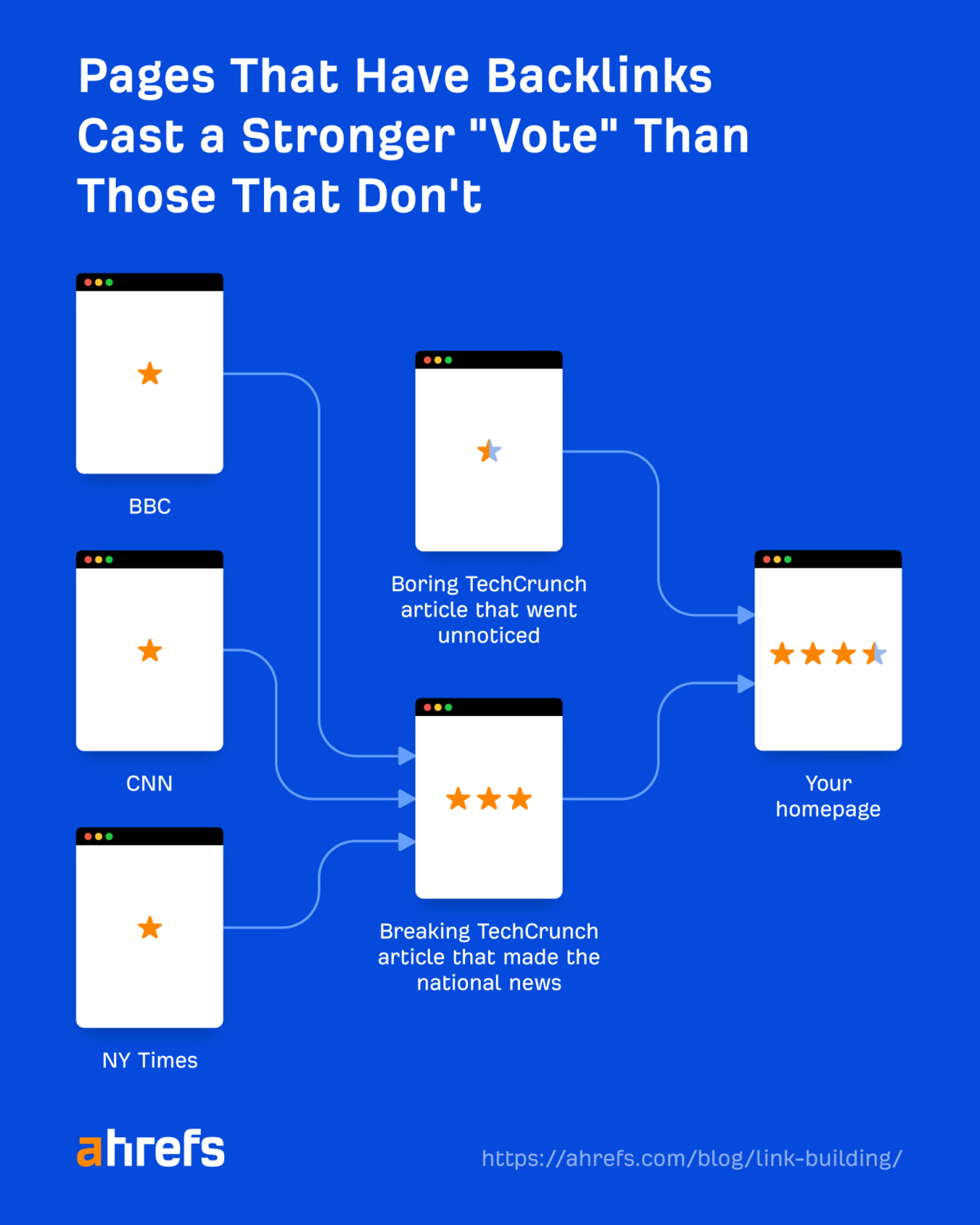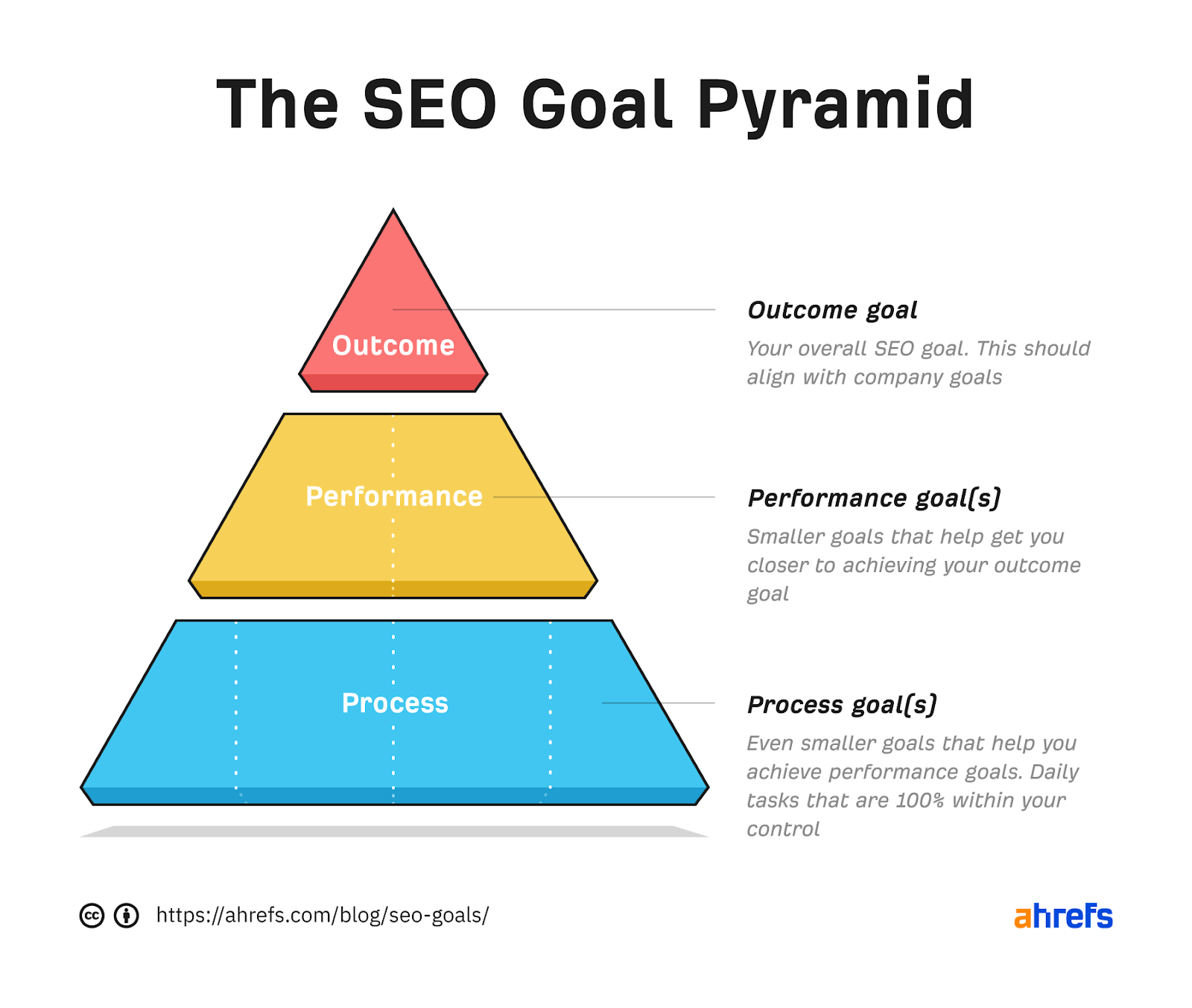Are you eager to give your website’s SEO a boost? The allure of backlinks is undeniable, but here’s the kicker: how many can you build each day without setting off alarm bells in the vast kingdom of Google? It’s like navigating a fine line between a gold rush and a minefield. In this digital journey, we’re about to embark on a quest to uncover the secret to safe backlinking.
Buckle up because we’re going to explore the magic number that keeps your website climbing the ranks without ruffling any search engine feathers. Now, fellow digital explorer, let’s delve into the captivating realm of deciphering the safe daily backlinking limit.
The Fundamentals of Backlink Building
In the complex realm of digital marketing, mastering the fundamentals of backlink building is akin to wielding a mighty sword. It’s a strategic art form that can elevate your website’s standing in the digital arena. According to Ahrefs, in a general sense, a page tends to attract more organic traffic from Google as its number of backlinks increases.
Now, let’s delve deeper into these fundamentals to unlock the secrets of SEO success.
Definition of Backlinks and Their Role in Search Engine Ranking
Backlinks or inbound links are hyperlinks from one webpage to another. They act as digital endorsements, indicating trust and credibility. According to recent statistics, high-quality link building constitutes a significant 30% of your total page score on Google. Backlinks are extremely important in search engine ranking:
- Authority and Credibility: Search engines are informed by backlinks from reputable websites that your information is reliable and worthwhile, which raises the authority of your website. A solitary link from a high-quality domain holds greater value than multiple links from low-quality domains.
- Improved Rankings: Search engines like Google consider backlinks to be ranking factor. High-quality, relevant backlinks can propel your website higher in search engine results pages (SERPs).
- Traffic Generation: Backlinks serve as a dual benefit, elevating your SEO while simultaneously propelling organic traffic. Users frequently employ these links to research related content, which increases the exposure of your website. It’s worth noting that more than 90 percent of web pages receive no traffic, often due to their lack of backlinks.
- Indexing and Crawling: Backlinks serve as pathways for search engine bots to discover and index new content. They aid in faster crawling and indexing, ensuring your pages are included in search results.
The SEO Benefits of Acquiring Backlinks
Backlinks and search engine optimization (SEO) work together in harmony. When determining a website’s rating, search engines like Google highly value backlinks. Among the 200 recognized Google ranking factors, backlinks stand out as one of the most crucial for Google search rankings.
The more high-quality backlinks you accumulate, the more authority and credibility your website gains in the eyes of search engines. This leads to higher ranking in search engines, increased organic traffic, and greater visibility in search results.
For instance, the figure above illustrates the effect of websites with stronger authority. Backlinks originating from robust webpages typically convey a higher degree of “authority” compared to those from weaker sources.
The Importance of a Diverse Backlink Profile
While acquiring backlinks is crucial, it’s equally vital to ensure diversity in your link profile. A diverse backlink portfolio encompasses links from various sources, including different websites, domains, and types of content. This diversity not only enhances your website’s authority but also makes your backlink profile appear more natural to search engines. It’s not just about quantity; diversity plays a pivotal role in SEO success.
The Concept of Safe Backlink Building
In the intricate landscape of SEO, mastering the concept of safe backlink building is akin to navigating treacherous waters with a steady hand. It is a sort of art that strikes a balance between caution and strategy to promote sustained growth. This section explains the fundamentals of establishing safe backlinks.
What Constitutes Safe Backlink Building?
Safe backlink building prioritizes quality and relevance over sheer quantity. It revolves around the acquisition of backlinks from reputable and authoritative websites that share a close connection with your niche or content. These valuable backlinks are not obtained through manipulation or purchase; instead, they are earned organically.
This process relies on the creation of valuable content and fostering genuine relationships within your industry or community. In essence, safe backlink building is about establishing a credible and authoritative online presence through meaningful connections and content that naturally attracts valuable links.
The Risks Associated with Aggressive Backlink Building
Aggressive backlink building, characterized by the rapid and often indiscriminate acquisition of links, may promise short-term SEO gains, but it comes with significant risks:
- Search Engine Penalties: Aggressive tactics, such as buying or spamming links, are a red flag for search engines. Google, for instance, penalizes websites employing such practices. These penalties can lead to a plummet in search engine rankings, jeopardizing your website’s visibility and credibility.
For example, the above message typically implies that, by the time it’s read, the most severe consequence has already occurred. In most cases, the website is entirely absent from organic Google Search. In some instances, it may impact only a portion of the site’s pages.
Google’s mission is clear: to deliver the finest results to its users. It has laid out quality guidelines that define its expectations from websites. Any effort to manipulate its ranking factors or exploit these quality guidelines is classified as spam. Google confronts a substantial challenge daily, uncovering approximately 40 billion spammy pages. Here’s how it takes action to combat this issue. 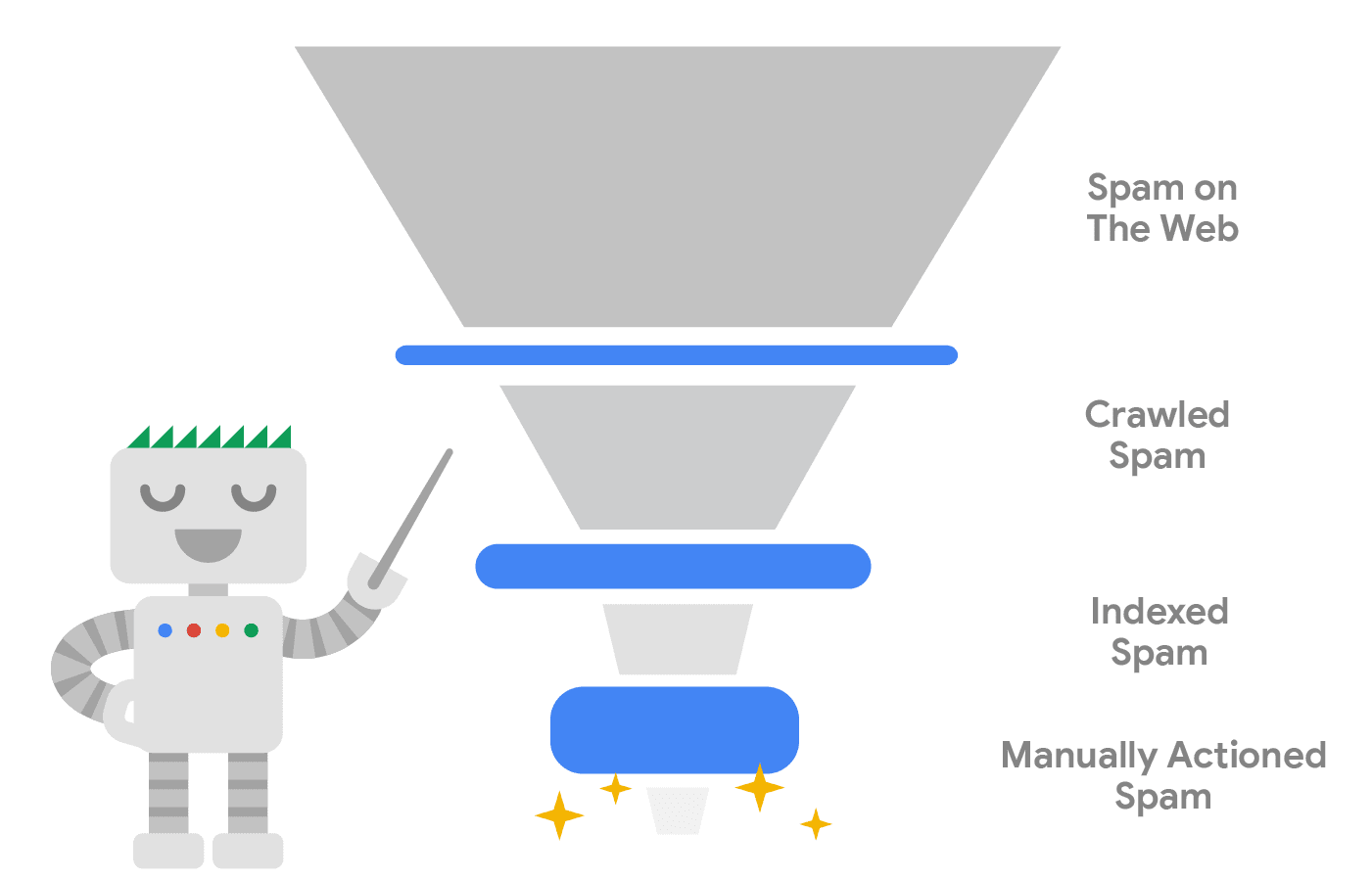
- Damage to Online Reputation: Aggressive link building often involves obtaining links from low-quality or irrelevant sources. This can tarnish your website’s reputation, making it appear untrustworthy or spammy to both users and search engines. A damaged reputation can deter organic traffic and harm your website’s overall credibility.
- Resource Inefficiency: Aggressive backlink building consumes resources and time, often with minimal long-term benefits. The pursuit of numerous low-quality links may yield short-lived improvements but frequently results in penalties, undoing any progress made. Redirecting these resources toward organic, high-quality link acquisition is a more sustainable and efficient approach to SEO.
The Need for a Balanced Approach to Link Acquisition
A well-rounded approach to backlink acquisition places a strong emphasis on quality rather than quantity. The crux of this strategy lies in prioritizing pertinent, top-notch backlinks originating from a wide array of sources while abstaining from quick-fix or aggressive techniques. This equilibrium not only serves as a protective shield for your website but also nurtures the growth of your SEO efforts in a sustainable manner. By concentrating on acquiring valuable, contextually relevant backlinks and avoiding questionable tactics, you strengthen your site’s authority. In consequence, this guarantees its enduring relevance in the constantly evolving realm of search engine optimization. This synergy between quality and diversity serves as the bedrock of a robust and efficient backlink acquisition strategy.
The Factors Affecting Safe Backlink Rates
The safe acquisition of backlinks in your SEO strategy is not a one-size-fits-all endeavor. Several factors come into play when determining the optimal pace of backlink building. Understanding these factors is crucial for creating a balanced and effective approach: 
- Website Age and Authority: Older, more established websites with higher domain authority can generally handle a faster backlink acquisition rate. Newer websites may need to proceed more cautiously to avoid appearing suspicious to search engines.
- Niche Competitiveness: The level of competition within your niche matters. In highly competitive industries, you might need to build backlinks more aggressively to keep pace with competitors, while in less competitive niches, a slower approach can suffice.
- Content Quality and Appeal: The quality and appeal of your content influence your ability to attract natural backlinks. High-quality, engaging content tends to earn links more organically, allowing for a more measured approach to link acquisition. According to Andrey Lipattsev, the former Search Quality Senior Strategist at Google, the primary factors that determine a page’s ranking on Google are Content, Backlinks, and Rank Brain.
- Search Engine Guidelines and Penalties: Strict adherence to search engine guidelines is paramount. Violating these guidelines with aggressive tactics can lead to penalties, making it crucial to stay within the bounds of acceptable practices.
- Long-Term SEO Goals: Consider your long-term SEO goals when determining your backlink rate. A sustainable approach that focuses on gradual growth and high-quality links often aligns better with lasting success, even if it means a slower pace of acquisition.
The above image displays the SEO goal pyramid. The concept is to break down your objectives into manageable stepping stones, making your ultimate goal more attainable. By accomplishing process goals, you set yourself up for success in meeting your performance goals. As you check off your performance goals, you significantly enhance your prospects of achieving your ultimate outcome goal.
Calculating Your Safe Backlink Rate
Determining the safe and effective rate at which you should acquire backlinks is a pivotal aspect of your SEO strategy. It’s not a one-size-fits-all equation, as several factors unique to your website come into play. Here’s how to calculate your safe backlink rate:
1.Assess Your Website’s Unique Circumstances
Start by assessing your website’s age, authority, and existing backlink portfolio. Well-established, authoritative websites frequently have the capacity to handle a more accelerated backlink acquisition pace. Conversely, a cautious and measured approach is often advisable for newer websites. This tailored strategy ensures that your backlink-building efforts align with your website’s unique circumstances and capabilities, setting the stage for sustainable SEO growth.
2.Tools and Resources for Analyzing Backlinks
Harness the power of SEO tools like Ahrefs, SEMrush, or Moz to comprehensively understand your current backlink profile. Through these tools, meticulously analyze the quantity, quality, and origins of these links from various domains. 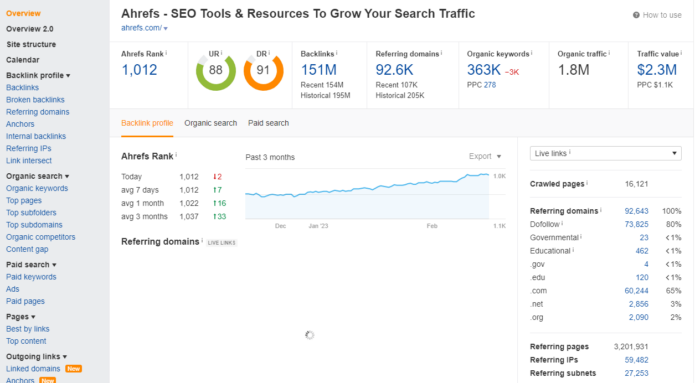
For example, the above image displays the backlink portfolio on the Ahrefs tool. Ahrefs equips you with a comprehensive set of tools for monitoring your backlinks and keywords. Additionally, it provides information on the tactics used by your rivals. You can get the most recent, accurate information pertinent to your link profile by performing a quick search.
This wealth of data is an invaluable benchmark, allowing you to establish pragmatic objectives for your backlink-building endeavors. With knowledge of your current backlinks, you can more effectively create a strategic plan that fits your website’s particular needs, encouraging long-term growth and boosting your overall SEO efficacy.
3.Set Realistic Goals and Expectations
Formulate progressive and doable goals for your backlink acquisition efforts based on the evaluation of your website and an understanding of the competitive dynamics in your niche. Maintaining a sense of realism is crucial to ensure that your objectives mesh well with the resources you have at your disposal.
Setting realistic goals paves the path for a systematic, long-lasting, and fruitful approach to backlink building. This ingenious method not only improves your website’s SEO chances but also ensures that your efforts are well within the bounds of reality, encouraging long-term growth and relevancy in the constantly changing environment of your niche.
4.Monitor and Adjust Regularly
Monitor your backlink profile often to assess your progress and identify any issues. Use tools like Google Search Console to identify new backlinks as they appear. Disavow any links immediately if you see any that seem strange or might hurt your SEO efforts.
Through vigilant monitoring and proactive management of your backlinks, you can mitigate potential adverse effects on your website’s search engine rankings. Simultaneously, this approach ensures the continued vitality and effectiveness of your backlink profile.
It’s integral to maintaining a robust and sustainable SEO strategy, safeguarding your online presence from potential pitfalls and setbacks.
5. Align with Your Long-Term Strategy
Take into account your overarching, long-term SEO objectives. While a secure backlink acquisition rate might involve a more gradual pace of obtaining links, it inherently aligns with sustainable growth and enduring success in SEO.
Emphasize the quality of your gained backlinks rather than the number since this technique is more likely to provide long-term effects. Ensure your link-building strategy is in harmony with your broader goals, working cohesively to fortify your website’s online presence and authority.
Doing so establishes a solid foundation for enduring achievement in the dynamic landscape of search engine optimization.
Strategies for Safe Backlink Building
Building backlinks is a fundamental component of SEO, but doing so safely and effectively requires a thoughtful approach. Here are four strategies to ensure safe backlink acquisition:
a.Gradual, Realistic Goals
Set gradual and realistic goals for backlink acquisition. Avoid the temptation to acquire a large number of links in a short period. A steady, measured approach is more likely to yield sustainable results and prevent suspicion from search engines.
b.Diversification of Backlink Sources
Diversity in your backlink sources is vital. Acquire links from various platforms and websites, including reputable domains, niche-specific directories, and social media. A diverse link profile appears more natural to search engines and strengthens your website’s authority.
c.Emphasis on Relevance and Quality
Prioritize relevance and quality over quantity. Seek backlinks from websites that are related to your niche or content. High-quality, contextual backlinks within well-written content hold more SEO value and are less likely to raise red flags with search engines.
d.Regular Monitoring and Disavowing
Continuously monitor your backlink profile to detect potentially harmful or spammy links. Use tools like Google Search Console and backlink analysis tools to identify issues. 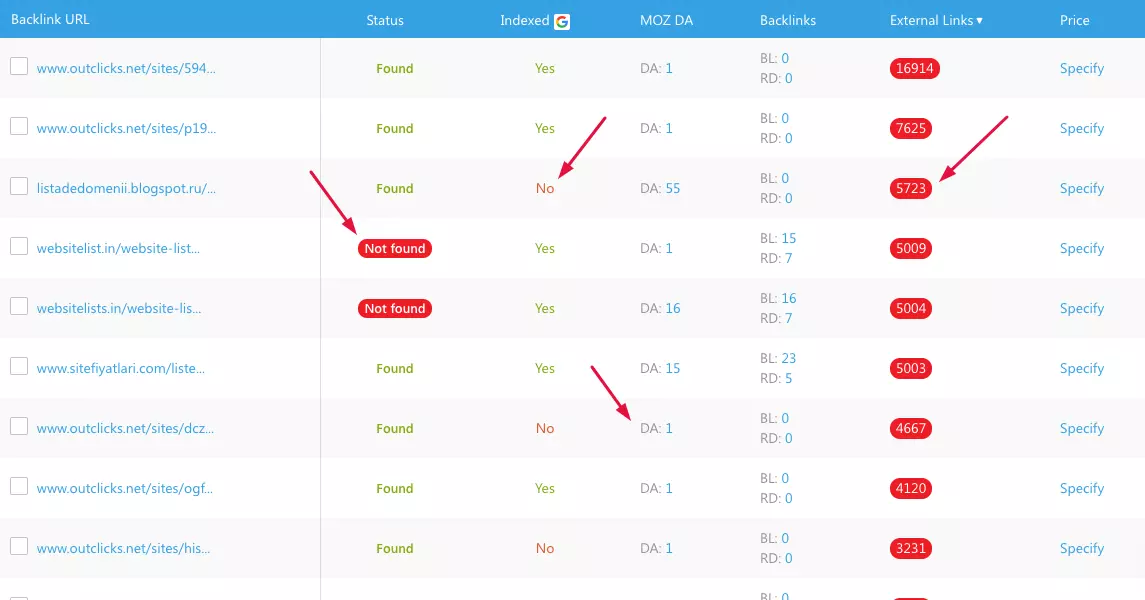
For example, the above picture displays the list of website backlinks along with their current status and DA. This analysis helps website owners filter out unnecessary backlinks from their portfolio, resulting in improved websites. If you come across links that could harm your SEO efforts, take action by disavowing them through Google’s Disavow Tool to ensure they don’t negatively impact your rankings. 
The following are some of the steps to take to disavow harmful backlinks:
- Navigate to the Google Disavow Tool and follow the prompts, proceeding until you reach the dialogue box that enables file selection.
- Choose the previously created disavow file and click ‘Open’ to upload it to the tool.
- Within the next day or so, Google will cease factoring in the domains listed in the file when assessing the ranking of your web pages.
Conclusion
In the world of SEO, the safe number of backlinks per day varies depending on circumstances. For a new website, a moderate pace of 25–30 backlinks per day is generally considered safe on average. However, there’s room for flexibility. Up to 500 links per day can be safe if they accrue organically through events like viral content, discussions on trending topics, or special business occasions.
Ultimately, the key is to maintain a thoughtful and balanced strategy that aligns with your website’s specific needs and objectives, ensuring both safety and sustainable growth in the dynamic landscape of SEO.

